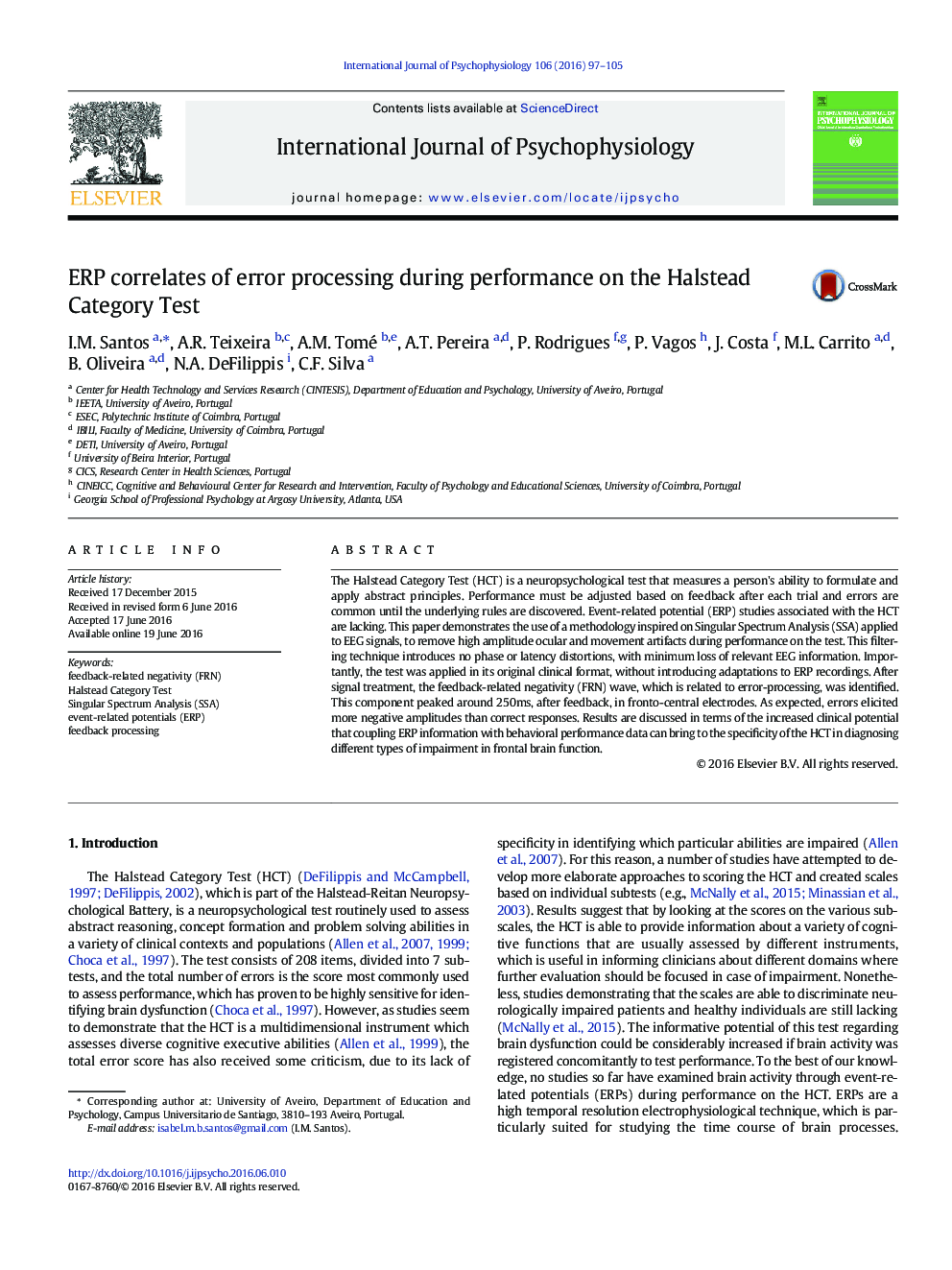| کد مقاله | کد نشریه | سال انتشار | مقاله انگلیسی | نسخه تمام متن |
|---|---|---|---|---|
| 929777 | 1474390 | 2016 | 9 صفحه PDF | دانلود رایگان |
The Halstead Category Test (HCT) is a neuropsychological test that measures a person's ability to formulate and apply abstract principles. Performance must be adjusted based on feedback after each trial and errors are common until the underlying rules are discovered. Event-related potential (ERP) studies associated with the HCT are lacking. This paper demonstrates the use of a methodology inspired on Singular Spectrum Analysis (SSA) applied to EEG signals, to remove high amplitude ocular and movement artifacts during performance on the test. This filtering technique introduces no phase or latency distortions, with minimum loss of relevant EEG information. Importantly, the test was applied in its original clinical format, without introducing adaptations to ERP recordings. After signal treatment, the feedback-related negativity (FRN) wave, which is related to error-processing, was identified. This component peaked around 250ms, after feedback, in fronto-central electrodes. As expected, errors elicited more negative amplitudes than correct responses. Results are discussed in terms of the increased clinical potential that coupling ERP information with behavioral performance data can bring to the specificity of the HCT in diagnosing different types of impairment in frontal brain function.
Journal: International Journal of Psychophysiology - Volume 106, August 2016, Pages 97–105
